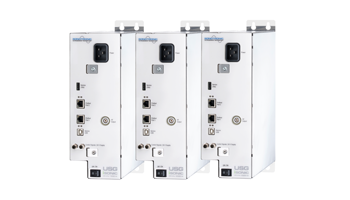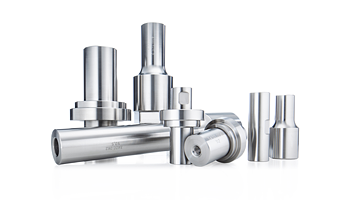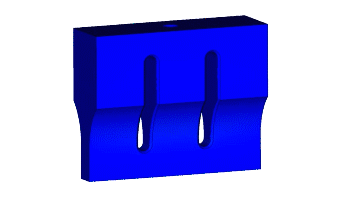SONOTRONIC GmbH
Becker-Goering-Str. 17-25
76307 Karlsbad, Germany
E-Mail: sales@sonotronic.de
Mon to Thu 8 am – 5 pm
Friday 8 am – 3 pm
Phone:
Ultrasonic converter iSONIC PULSE CON
Different frequencies for optimal welding results
SONOTRONIC offers converters with three different frequencies: 20, 30 and 35 kilohertz, with outputs from 1,200 to 4,000 watts. There is a wide range of different variants for different applications, and waterproof types are also available.
Depending on the application, the ultrasonic converters are equipped with four or six disk ceramics. The latter are mainly used in the packaging industry and for continuous ultrasonic applications. Via the disk ceramics, the vibrations are optimally transmitted to the ultrasonic tool (sonotrode), so that short process times and high process reliability are achieved. The high-quality housings are very robust and durable and have different HF interfaces.
Components
GeneratorsVideo
For you to download
Technical data
What is a converter?
There is a converter in each ultrasonic unit. It converts the electrical oscillations generated by the ultrasonic generator into mechanical oscillations of the same frequency, and thus causes the welding tool to vibrate. In Latin, to convert means "convertere." With the piezoceramic effect, the converter ensures optimum sonic transmission.
How does a converter work?
- The upper part of the ultrasonic converter contains a stack of piezoceramic disks. Depending on the ultrasonic application, these are four or six disks. Between each of the ceramic disks is a thin metal plate that conducts the current. The ceramic stack is screwed to the converter shaft.
- When an AC voltage of approx. 1,200 volts with an ultrasonic frequency of 20 to 35 kilohertz is applied, the piezoceramic expands. The package pulses at the corresponding frequency. Measured in micrometers, the converter then mechanically vibrates between 6 and 14 μm in longitudinal axis 20,000 to 35,000 times per second.
- This mechanical ultrasonic vibration generated in the converter is transmitted via the booster to the sonotrode and then into the workpiece. The change in length of a piezoceramic when a voltage is applied is also referred to as the inverse piezoceramic effect.
Technical data
- Frequencies: 20, 30 and 35 kHz
- Power:
- 20 kHz to 4,000 W
- 30 kHz to 2,000 W
- 35 kHz to 1,200 W
- Latest state of the art, strong construction and highly efficient (>90%)
- Long life
- Maximum sonic output as a result of ideal oscillation characteristics
- Short process times and very high process reliability
- Converter housing
- With retaining ring (clamping ring)
- Up to protection class IP68 available
- Optional cooling air connections
- Optional stainless steel version
- Converter also available for rotary applications
- 100 % in-house-production

You might also be interested in
Contact



